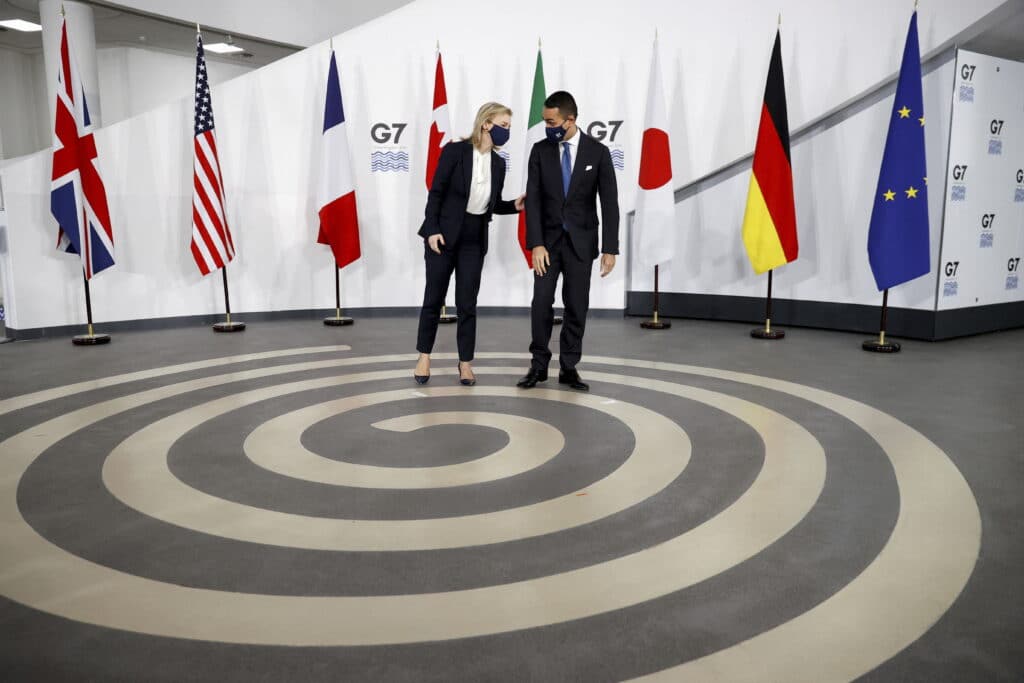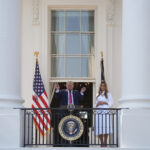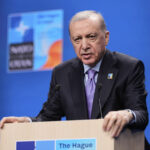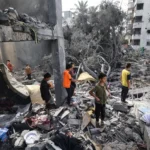Learning to Live With An Iranian Nuclear Weapon
As nuclear talks in Vienna continue to sputter along, it’s time to acknowledge the obvious: the West has been unable to prevent Iran from developing nuclear weapons.
Since the United States withdrew from the 2015 agreement on Iran’s nuclear program, the Joint Comprehensive Plan of Action (JCPOA), Iran has accelerated its uranium enrichment program and blocked inspections by the International Atomic Energy Agency. According to The Institute for Science and International Security, Iran today has enough enriched uranium to produce a nuclear weapon in one month and a second weapon in less than three months.
All attempts to halt or seriously delay its march towards a nuclear capability have failed. Iran has withstood Trump’s sanctions, recovered from Israel’s sabotage operations and used Biden’s return to negotiations to play for time. Only the most willfully blind or irrationally optimistic observer expects the talks in Vienna to produce an agreement that would freeze Iran’s nuclear program. Iran’s hardline clerics won’t settle for anything less than immediate and comprehensive sanctions relief, and that’s simply not something the United States and its allies are prepared to offer. Meanwhile, prolonging the negotiations in Vienna has become an end in itself, because it allows Iran to accelerate its nuclear development efforts.
While it’s clear that Iran has the capability to produce a bomb in a matter of weeks, the regime’s intentions remain the biggest unknown. Under what circumstances will the Supreme Leader order his scientists to assemble a weapon and when? Although our intelligence experts cannot answer these questions with any degree of certainty, the mere fact that Iran sits in the driver’s seat on this matter has raised the most serious of alarm bells in Washington, Tel Aviv and European capitals.
The leaders of the United States and Israel have repeatedly stated that they will not allow Iran to acquire a nuclear weapon, which leaves the question: what are they prepared to do to stop it? If sanctions, covert actions or diplomacy don’t work, then that leaves military strikes as the last remaining option. Speculation about such a “Plan B” has been running at fever pitch over the past few months, but it ignores some very unpleasant realities.
The tactical challenges to taking out Iran’s nuclear program by force are daunting. The Islamic Republic has dispersed its research and production facilities over multiple hardened and highly defended sites. To be even moderately successful, military strikes would require a campaign of overwhelming force, with no guarantee of success and a significant potential for civilian casualties and collateral damage. Iranian retaliation would be swift and asymmetric. Using its cyber, missile, maritime and proxy capabilities, Iran would cause considerable damage to U.S. forces in the region, commercial shipping, critical infrastructure such as desalination and petrochemical facilities, and Israel. It’s hard to imagine any American President, and especially the current one, giving the green light to an operation that he knows would produce such cataclysmic consequences.
Decision makers in the West are therefore facing a stark choice: either try and use force to cripple Iran’s nuclear program or allow it to develop weapons of mass destruction. Realist thinkers in the arms control and foreign policy communities have begun advocating latter option. While a nuclear-armed Iran is certainly bad, the alternative is worse. As former Secretary of State Colin Powell recently said of North Korea’s leader Kim Jong Un, “Let the little jerk have his parades and what not. He’ll never try to attack us because he knows it would be assisted suicide.” The same can be said of Iran and its Supreme Leader.
Unfortunately, this argument ignores significant differences between Iran and North Korea. China exercises a restraining influence over North Korea. No state has such power over Iran. Iran’s relations with proxy forces like Hezbollah in Lebanon, Hamas in Israeli, Houthis in Yemen and militias in Iraq raise the very real possibility of nuclear weapons being used by third parties in ways that can’t be traced back to Tehran. Moreover, it is reasonable to assume that Iran’s Arab or Turkish neighbors would respond by seeking a similar capability, sparking a de-stabilizing arms race in what is already one of the world’s most volatile regions.
Over the long-term, time is not on the side of Iran’s leaders. Their economy is in shambles and will never improve as long as sanctions remain in place. Meanwhile, the country is beset with fundamental weaknesses that will inevitably bring down the regime: a corrupt and unaccountable leadership; rampant suppression of dissent and the most brutal human rights abuses; catastrophic environmental damage that has crippled the agricultural sector; and the Islamic revolution’s loss of legitimacy among steadily increasing numbers of Iranians. The last thing we should do is give the mullahs in Tehran a new lease on life. Attacking Iran would only serve to rally public support to their side. The United States and its allies would do well to exercise a bit of strategic patience. Keep up the economic pressure. Maintain Iran’s international isolation. Provide meaningful and persuasive deterrence to our regional friends in harm’s way. And let events inside Iran take their inevitable course.
Disclaimer: The views and opinions expressed in this article are those of the authors and do not necessarily reflect the official policy or position of Newslooks.com







